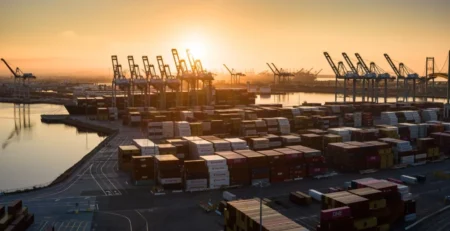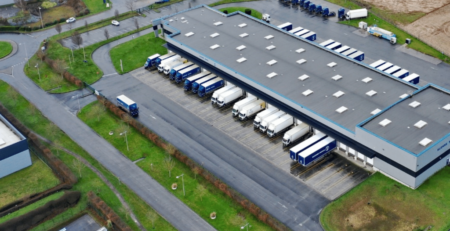AI Enters the Driver’s Seat as Multimodal Logistics Faces Growing Complexity

By Maria Kalamatas | July 17, 2025
Rotterdam, July 17 — From warehouse dashboards in Europe to inland terminals in Southeast Asia, artificial intelligence is no longer just a tool — it’s becoming the control center of global logistics. As supply chains fragment and geopolitical tensions upend routes, major freight operators are turning to AI platforms to manage multimodal complexity in real time.
“We’re not using AI to automate anymore. We’re using it to make better decisions faster,” said David Becker, Chief Operations Architect at Freightrix, a Netherlands-based logistics software firm.
Smarter Routing, Not Just Faster
In the past six months, over 60% of mid- to large-sized freight companies have integrated AI-based planning tools, according to a study released this morning by the Global Logistics Technology Forum. These tools analyze thousands of data points — vessel schedules, customs delays, rail capacity, regional strikes — and simulate optimized routing across road, rail, sea, and air in seconds.
“Last week, we rerouted 18 containers from Trieste to Koper due to unexpected port labor issues. The system flagged it before we even got the first alert,” explained Katharina Ulrich, network planning manager at CargoScope AG.
From Reactive to Predictive
AI systems are helping shift the industry away from reactive crisis handling toward predictive operations. Some platforms now generate risk scores for entire trade corridors, allowing dispatchers to proactively adjust loading plans days in advance.
In Brazil, a textile exporter using SmartLane AI reportedly reduced air freight costs by 27% last month by pre-empting delays at Guarulhos Airport and switching to multimodal ground-rail combinations.
“AI doesn’t just optimize the route — it sees the risk before you do,” noted Becker.
The Human Element Still Matters
Despite the rise in adoption, industry leaders insist that AI is not replacing human decision-makers. Instead, it’s becoming a high-speed advisor in increasingly unpredictable supply chains.
“We still run every recommendation through experienced planners,” said Ulrich. “But without the AI alerts, we’d miss opportunities and risks we don’t have the time to spot ourselves.”
Freightrix, Project44, and CrimsonTrack are among the platforms reporting record customer onboarding this summer. Demand is highest in sectors exposed to multimodal risk — automotive, pharma, and electronics.
The post AI Enters the Driver’s Seat as Multimodal Logistics Faces Growing Complexity appeared first on The Logistic News.
Share this post
Related
Posts
Holman Logistics Named Top 100 3PL for Tenth Year Running
By Maria Kalamatas | July 18, 2025 Seattle, July 18 — Holman Logistics has once again secured a place on Inbound...
GXO Logistics to Release Q2 2025 Results Amid Contract Logistics Expansion
By Maria Kalamatas | July 18, 2025 Greenwich, July 18 — GXO Logistics has announced that it will report its second-quarter...
U.S. Port Activity Holds Steady, but Outlook Remains Uncertain, Says ITS Logistics
By Maria Kalamatas | July 18, 2025 Reno, July 18 — Port operations across the United States remained stable in July,...
H.I.G. Realty Acquires Eight Last-Mile Logistics Assets Across France
By Maria Kalamatas | July 18, 2025 Paris, July 18 — U.S.-based investment firm H.I.G. Realty has acquired a portfolio of...





